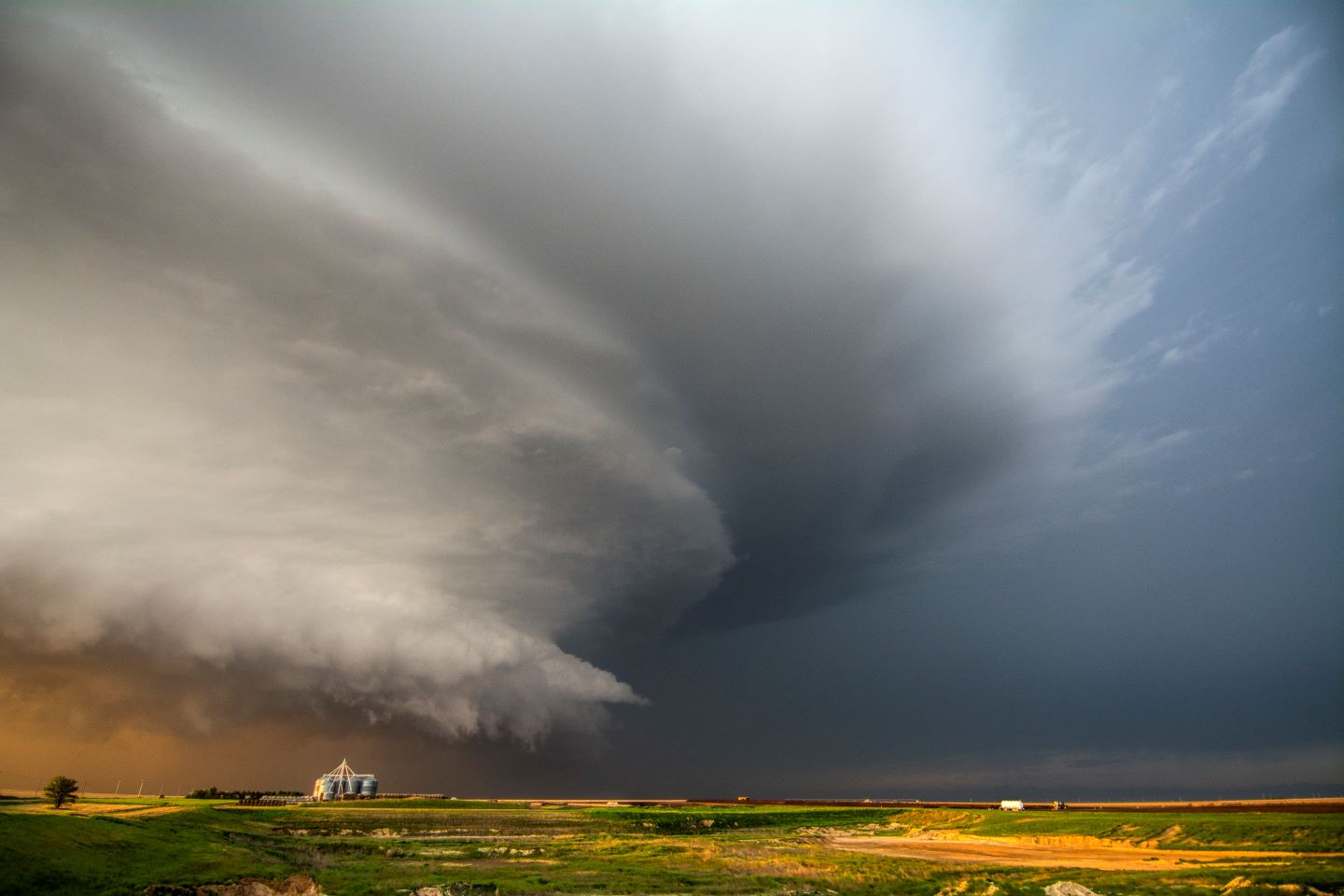Tornado Safety
Tornadoes can cause significant damage, including destroying buildings, ripping trees from the ground, and throwing large objects across vast areas. Tornadoes are spinning columns of high winds spiralling around a centre of low atmospheric pressure. They often accompany a shroud of heavy rain or hail. A tornado warning and a tornado watch are very different.
In Alberta, we have seen recently just how destructive tornados can be.
A tornado warning means there’s a tornado in your area, or it will hit soon. Watch out for evacuation orders. A tornado watch means there may be a tornado in your area. Closely monitor local weather reports for more information.
Tornadoes can travel up to 70 kilometres per hour, leaving a path of destruction in their wake. A tornado can also be small, and only touch the ground momentarily. They typically occur in the afternoon and evening but can also hit in the middle of the night and may appear in a green, yellow or black sky.
Warning signs that a tornado may form include:
- Severe thunderstorms
- Very dark clouds highlighted with a few green or yellow areas in the sky
- A rumbling sound
- Funnel cloud forming at the base of a dark cloud
Tornadoes are common in southern Quebec, Ontario, Alberta, New Brunswick, Saskatchewan, and Manitoba. Tornado season is usually between April and September, with the strongest winds in June and July. Tornado winds can reach 500 km/h. Annually about 43 tornados occur across the Prairies, and about 17 occur across Ontario and Quebec.
Environment Canada can keep you updated on tornado warnings in your area.
When a tornado threatens, take shelter immediately, preferably in the lower level of a sturdy building. Mobile home residents should go to their shelter area. If caught outdoors with no cover, lie flat in a ditch, ravine, or other low-lying area, and shield your head with your arms.
Ensure that all doors and windows are closed when a watch is issued. Flying glass and other debris pose the greatest danger to human safety.
A tornado usually moves along a narrow path from the southwest, west, or northwest but may suddenly change direction. Groundspeed can vary from nearly stationary to 90 kilometres per hour, the path can be more than 20 km long and 400 m wide, and its duration can be up to one hour. In rare events, tornadoes can be 1 to 2 kilometres wide and travel more than 100 kilometres on the ground.
If you see a tornado that does not appear to be moving, it is likely moving straight away from you or directly towards you. The roaring or freight train sound often attributed to tornadoes is not strictly a tornadic effect. The noise is caused by strong winds moving around and past obstacles such as trees and buildings. In open country, tornadoes may only emit a whine or whistle-like noise.
Often, tornadoes strike without warning. Therefore, knowing the signs, and being prepared, is a must to help reduce the likelihood of employee injuries or fatalities.
Develop a Disaster Preparedness Plan for dealing with a tornado: Your company orientation and an employee handbook should cover worst-case scenarios, like tornadoes.
Select a Safe Place where employees will go in all situations: While the safest place is in an underground tornado shelter or basement, sometimes that isn’t an option. According to the American Red Cross, other places to go when a tornado warning has been issued include a small, windowless interior room or hallway on the lowest level of a sturdy building. Stay away from doors, windows, and outdoor walls. Avoid auditoriums, gymnasiums. or cafeteria-style rooms with a large flat root.
Employees who routinely work outdoors, or in a building that isn’t sturdy, should seek an underground shelter or sturdy building immediately upon warning and should never wait until they see a tornado. If they can safely drive to a shelter, they should do so, but they should never try to outrun a tornado.
If outdoor workers cannot get to a sturdy building or shelter and have access to a vehicle, they should be advised to get into one, buckle in and put their head down between their legs, lower than the vehicle windows, with both hands over the back of the head.
The National Weather Service advises travellers to lie down in the ditch with both hands over the back of the head. The idea is to be lower than the debris flying around, as most tornado injuries are from being struck by flying debris. When employees are travelling or working outdoors, and weather conditions are favourable for tornadoes, a safe spot should be identified before the start of the workday.
Always wear adequate protective gear when handling or moving through debris. Be alert for a gas smell and immediately report possible broken gas lines to the utility company. Watch out for fallen power lines, stay out of damaged buildings and be sure to photograph damage for insurance claims.
Employers are responsible for the safety and health of their workers and for providing a safe and healthy workplace. Employers are required to protect workers from the anticipated hazards associated with severe weather events, like tornadoes. If you have questions about keeping your workplace safe, contact the Goal Zero team today.y.

